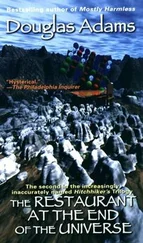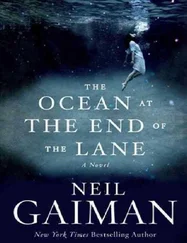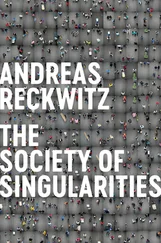It is no surprise that diversity and cosmopolitanism are the guiding principles of hyperculture. In hyperculture, diversity is good in itself. 16A multiplicity of cultural practices from various national, regional, ethnic, historical, social, or religious origins is considered an enrichment, because it enormously expands the field of cultural resources for individual self-actualization. Conversely, a reduction of cultural diversity, or a monoculture, would mean that there are fewer cultural resources and therefore fewer options for self-actualization. Within today’s hyperculture, diversity goes hand in hand with the model of hybridity. 17Hybridity means that cultural features should not exist in isolation from one another but should, rather, be freely combined with one another. It is this that gives rise to what can be called cultural cosmopolitanism. In this sense, cosmopolitanism means having an essentially open attitude toward the diversity of cultural practices and goods, regardless of their origin. Not coincidentally, cosmopolitanism typically overlaps with globalism: it welcomes and promotes the global flow of goods, ideas, and people.
Culture as hyperculture thus designates not only a specific understanding of culture but also, and above all, a particular way in which cultural entities are produced, circulated, and appropriated in society. The fact that culture as hyperculture has been able to become so significant and powerful over the last few decades is due to several aspects of the structural transformation of society that have systematically promoted and favored it. First, the transnational new middle class of highly qualified individuals – which is endowed with extraordinary cultural, economic, and social capital – has sought and discovered its identity in the medium of hyperculture, which defines its lifestyle of self-development and singularity-based prestige. Second, cultural capitalism – which is not focused on industrial functional goods, but rather on goods and services with symbolic and experiential value – fuels hyperculture by constantly introducing new cultural goods into the world and making existing local cultures useful to its own ends. Third, liberal cultural politics, which endorses diversity and globalism, has bolstered the tendencies of hyperculture (especially in large cities), while – fourth – global processes of migration have steadily been feeding new elements into the global sphere of cultural circulation.
Culturalization II: Cultural Essentialism
Along with globalization, hyperculture has spread both within and beyond the old Western world. Over the course of its ascent since the 1980s and 1990s, however, a countermovement has developed that could be called “the International of cultural essentialism.” It has been startling to observe how this movement, too, invokes culture, even though its understanding of culture’s game of valuation and devaluation is entirely different from that of hyperculture. This cultural-essentialist countermovement includes the diverse forms of fundamentalism within the three monotheistic religions, the numerous and powerful proponents of heightened cultural nationalism (in Russia, China, or India, for instance), and the right-wing populist and identitarian movements in Europe and North America. Though situated somewhat differently, North American identity politics, and regional movements in places such as Scotland and Catalonia, are at least related to these variants of cultural essentialism. At first glance, all of these tendencies can hardly be reduced to a common denominator; viewed from a greater distance, however, one sees that they are all opposed to cosmopolitan hyperculture and that, oddly enough, this opposition is itself waged through the medium of culture and identity.
Keep in mind that cultural essentialism exists in a number of different varieties, which range from regional identities to fundamentalist terrorism and which, at first glance, hardly seem to be related at all. Nevertheless, it is possible to recognize certain common structures. Central to this understanding of culture is the following point of departure: the collective identity of a community. Whereas the keystone of liberal hyperculture is individual self-development, cultural essentialism is based on the collective, the community, the locus of culture. Here, culture (as the sphere of what is valuable) is that which holds a community together and defines its common identity. 18The individuals involved have accordingly integrated themselves into the collective, where they earn self-evident recognition without competing for it, simply by being part of the group. Cultural essentialism is thus a form of communitarianism. This basic structure applies just as much to religious groups as it does to cultural nationalists or self-conscious ethnic communities. Here, the collective is not a general and anonymous global society but is itself something unique, with its own particular history, beliefs, and origin. In short, the locus of singularity in hyperculture is the individual person, whereas, in cultural essentialism, the community as a whole becomes singular, somewhat like a nation: it distinguishes itself from others and has a complexity “entirely its own”.
Cultural essentialism constructs a rigid boundary: between one’s own group and others, between ingroup and outgroup. Whereas, in hyperculture, culture and its valuable goods are mobile, dynamic, and unpredictable – and transgressing boundaries is the rule – the central objective of cultural essentialism is to stabilize the symbolic boundary between the internal world and the external world. Here, the internal world of one’s own culture is attributed a stable and seemingly unassailable value. In Benedict Anderson’s terms, these are “imagined communities,” communities that exist in the collective imagination and cultivate their own self-image, history, and moral code. 19The ideal of cultural essentialism is, therefore, the homogeneity of the community, its unambiguity, and its uniformity, which absorb the differences that exist between its individuals. Of course, a rather strong distinction is draw between the inside and the outside: in contrast to the sacred nature of the inside, the external world seems profane, or even worthless. The context of cultural essentialism thus gives rise to “neo-communities.” The prefix “neo-” is necessary here because, unlike the case of traditional communities, neo-communities are not collectives into which people are simply born; instead, they are communities that people consciously choose to join. 20Cultural neo-communities can coexist with friendly indifference toward one another – according to the manner of ethno-pluralism – but they can also aggressively distance their own culture from the outside and even, in extreme cases, wish to eliminate it. For religious fundamentalists, the outside consists of nonbelievers; for aggressive nationalists, it consists of other, inferior nations; and for right-wing populists, the outgroup consists of immigrants and the cosmopolitan elite.
In cultural essentialism, one’s own culture is therefore not a matter of negotiation; it is rather the ineluctable point of departure. Culture seems to have an essence of its own, and time and space – that is, its history and place of origin – are the two important pillars upon which this culture is based. There is no praise for the present or the future; at its core, cultural essentialism is rather a retreat into the past, into the history and traditions from which a given religion, nation, or people supposedly emerged. It is often a common homeland that lends such groups their identity, and thus cultural essentialism is typically critical of globalization: the circulation of goods and people is here perceived as a potential threat to one’s own identity.
Читать дальше









